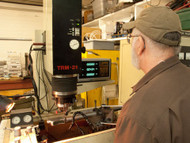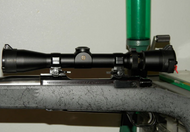This is the joint effort of Morris Melani, owner and operator of Alaska Arms LLC and Dennis Daigger an amateur custom gunmaker.First the concept.Dennis:A workmate living in Southeast Alaska hunted pta
read more
Ovate Barrels - Part 1
Posted by Dennis Daigger on 12th Jan 2014



